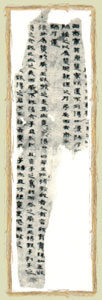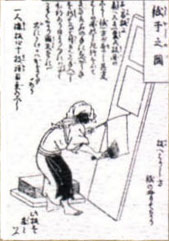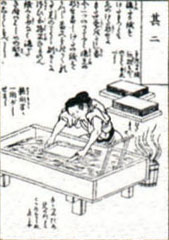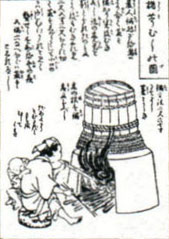Our visit at the Paper Mill Museum begins inside the mill. It’s here where the history begins of a very old art; hand made paper, which has helped people to multiplicity their expressions during the centuries.
The discovery of paper, between legend and reality
The discovery of paper is one of many shining precious stones in the history of human civilisation; this discovery is worldwide attributed to a Chinese minister named Ts’ai Lun, in 105 a.c..

Old tales tell that Ts’ai Lun was finding himself at the shore if a pool besides a laundry which was squandering water of some, probably wear out textiles. The laundry, suffering hard under the rubbing and beating began, to fray and small fibres began to float but later on they began to reunite into a small sheets at the feet of Ts’ai Lun.
On the skin of the water a veil of fibres was formed after a while. Ts’ai Lun observed it and he picked it up with care to put it on herbs to let it dry. The dry sheet was solid, white and soft and it brought Ts’ai Lun the brilliant idea that it could be used as writing material. This legend about the art of making paper runs from that moment on around the world at relatively fast speed. It reaches through the east to Korea and from there to Japan in the VI century a.c., then it comes to the Arab world to reach the Mediterranean later on. The new art became successful for its special qualities and it substitutes the production of parchment paper in short time.
The material originally used for the production of paper was mulberry which was replaced later on by treated bamboo. Even later materials such as linen, hemp and rags were used to produce paper. Some papermakers had their own procedures, their formulas and their secrets. Not only papermakers contributed to general knowledge of the art of papermaking, there were also literates, writers, copiers and the public that made their own paper. In fact the process was divulged with simple tools to realise. In practice the procedure remained completely equal to the original Chinese one. The first steps in the process to “industrialise” the production can be attributed to the Italians. Many exclusively manual operations became mechanical or with aid of already existing equipment in advantage of the production and the costs.
 |
 |
 |
Three moments in the art of producing paper in China
Between the first sources, to discover the existence of paper in the XII and XIII century, there are the notaries acts that write about the existence of the products of papermakers. These acts did not specify the provenience of the paper. It was not mentioned weather it was imported from other places and traded in the Sea Republics; Amalfi, Pisa, Genoa and Venice, while those cities all had trade relationships with Syria and the costs of Palestine where excellent paper was produced in those days.
Those Republics held intense trade relationships with the Orient and therefore they could have learned the art of papermaking without any problem from the Orientals. In the period of the Middle Ages it were the galilees which used to bring crusaders and merchandise to the Holly Ground. Therefore it cannot be excluded as well that on board these galilees “paper art” had been transported backwards. Already in the IX century the oldest Sea Republic, Amalfi had it’s own bases in Palermo, Messina and Syracuse. Even today the Amalfi influence is still present in these cities in the local toponymy. This leaves us with the old question on the primacy of paper in Italy and later on in Europe. For Italy there are mainly two cities to contest to be first; Amalfi and Fabriano.


